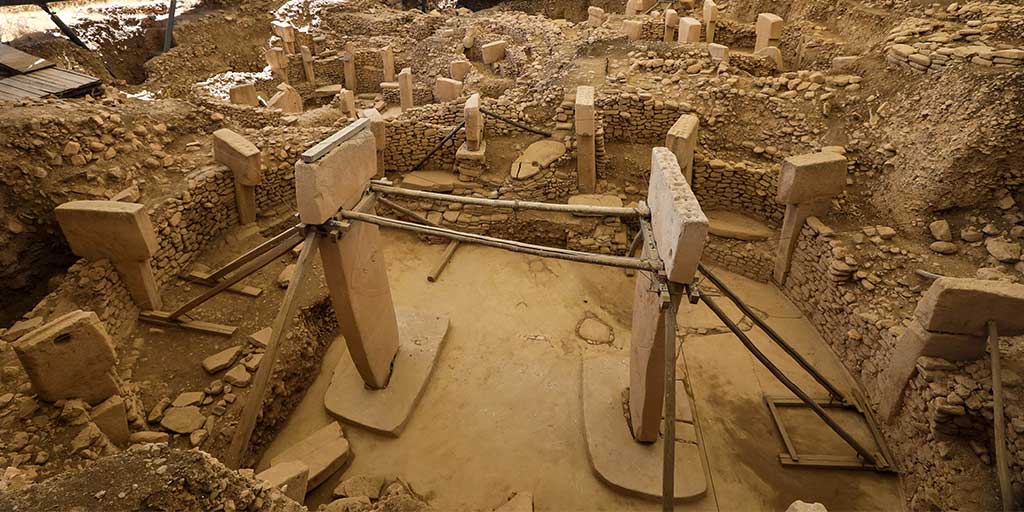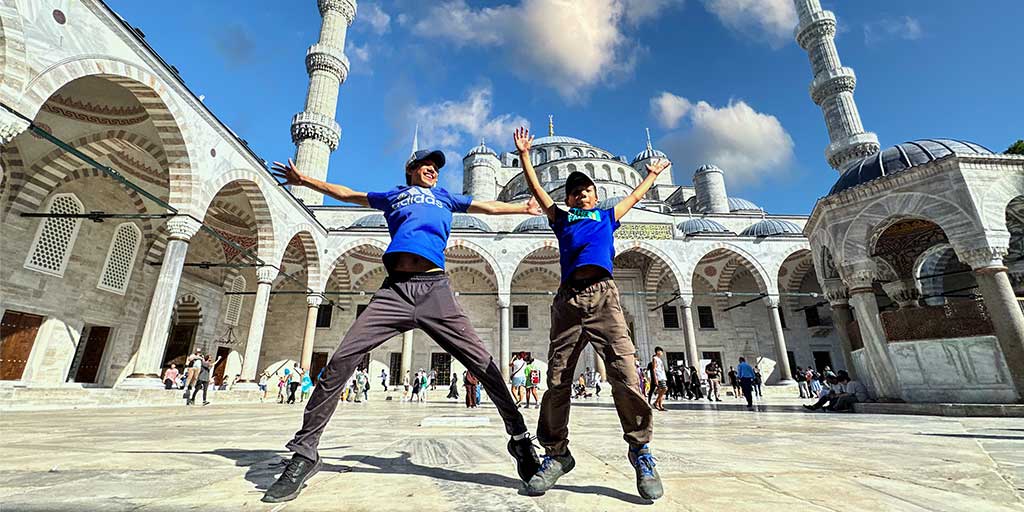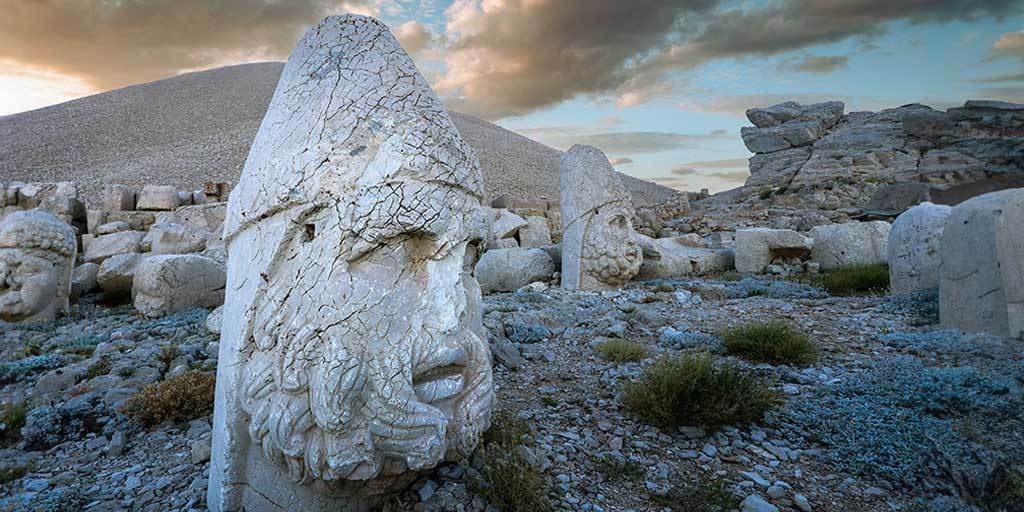Discover the hidden gems of Şanlıurfa, Turkey, with our comprehensive guide to the top things to do in this ancient city. From exploring the world’s oldest ruins and vibrant bazaars to savoring delectable local cuisine, plan your perfect adventure in Şanlıurfa with our expert tips and recommendations.
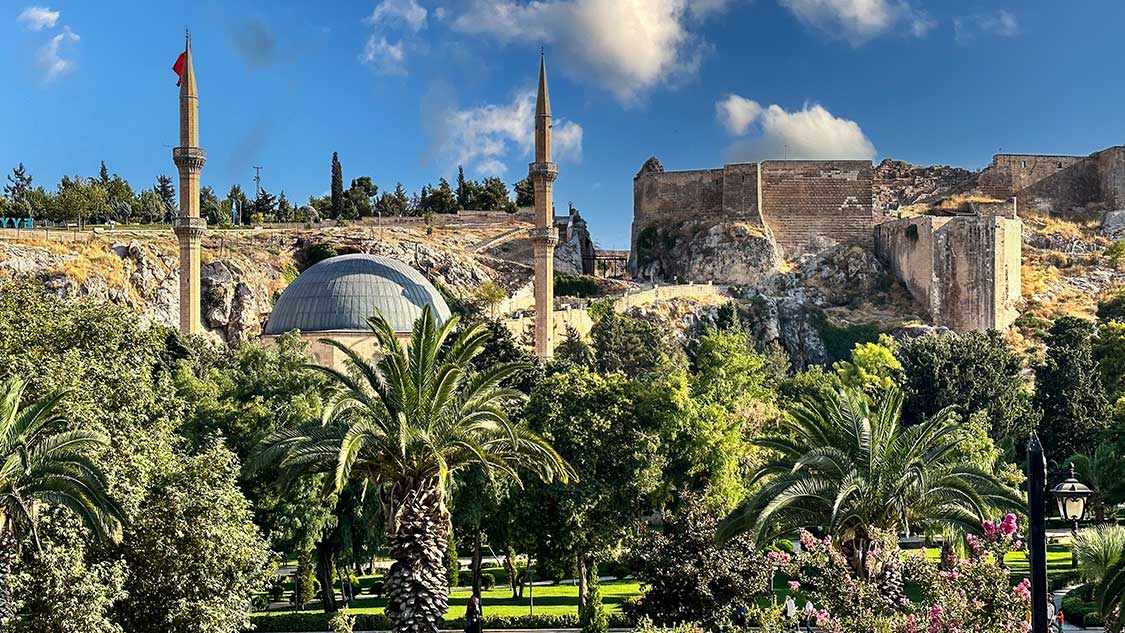
I’m a little obsessed with history. I’ll admit it.
It’s a funny thing because, in school, I didn’t care that much about history. I skimmed through the classes at my school in Peterborough, Ontario, not particularly enthralled by the Canadian stories that were touted in the school textbooks.
Yet here I am, in the city of Sanliurfa, Turkiye, just 150 miles from the Syrian border, waking my kids up at the crack of dawn to go explore history in a far-off land.
Maybe it was all a matter of scale. After all, Canada is just a little over 150 years old. But the history of Sanliurfa goes back an astounding 12,000 years.
In fact, this region of far-east Turkiye gave rise to some of modern civilization’s most vital accomplishments and some of history’s most incredible moments.
Yet almost no one visits here.
My family was at the end of our four weeks of travel through Turkiye, and discovering all of the things to do in Sanliurfa (or Urfa as it’s known locally) was the very last stage of our Turkiye itinerary.
About Sanliurfa
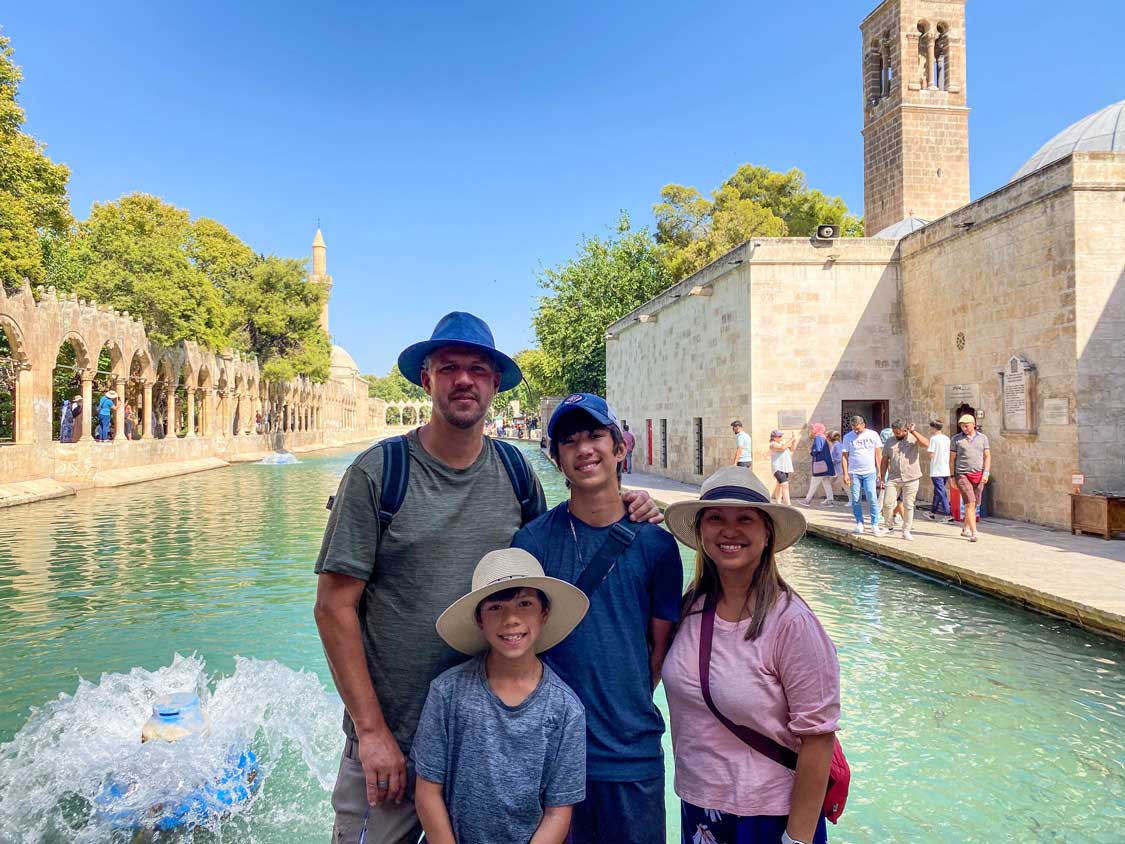
Urfa, or as it’s officially called, Sanliurfa, has gone by many names in its long history. For much of the Hellenistic and Christian times, the city was known as Edessa. But for the thousands of Muslim and Christina pilgrims that make their way to Sanliurfa each year, the city is known as “The City of Prophets.”
The city’s cross-section of busy streets are lined with busy markets, vibrant bazaars, quaint shops, mosques, and cafes. In many ways, life here feels like Istanbul on a micro-scale.
But beneath the surface of this typical Turkish city lies a history that is nearly unmatched anywhere else in the world.
The chronicled history of Urfa dates back at least 12,000 years. It can be found in the nearby ruins of Gobekli Tepe, believed to be the oldest human-made structure ever found. This region is where the earliest known evidence of agricultural society was recorded.
Throughout the millennia, Sanliurfa has experienced much.
In 1996 BCE, the Prophet Abraham was born here in a cave that can be visited. The city was fought over by the Persian and Roman empires. Alexander the Great named it Edessa after he conquered it in the early 4th century. It became a Christian city for a short time until it fell under Arabic control in 637 CE.
The city’s name was changed to Urfa in 1637 under the rule of the Ottoman Empire. It was ultimately renamed Şanlıurfa (Glorious Urfa) in 1984 in the aftermath of the Turkish War of Independence.
Our Experience In Sanliurfa
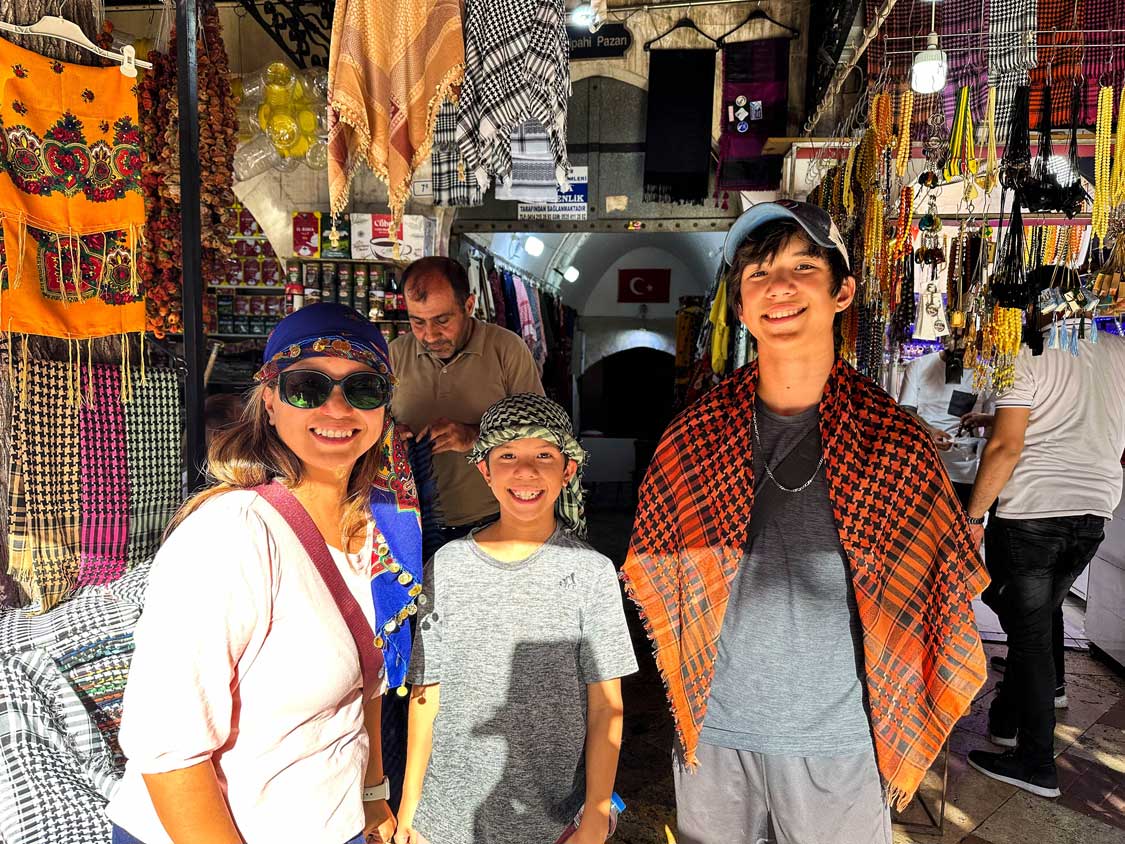
My family arrived in Sanliurfa after a day of visiting Mount Nemrut and the attractions nearby. We had settled at the Sehrazat Konagi Hotel near the town center and were using it as a home base to explore the region.
We were being shown around the region by an incredible guide named Toha, who we had found through the Tours By Locals website.
The previous day, we had spent much of our time visiting the sites between Mount Nemrut and Sanliurfa, such as the Severan Bridge, a 2,000-year-old Roman bridge next to a beautiful gorge, Karakus Tumulus, a tomb with incredible pillars, the historical site of Arsameia, and finally a peaceful and relaxing sunset cruise to the Halfeti Sunken City where the kids enjoyed some lakeside slushies among the beautiful views..
We arrived late to our hotel. But even though we were exhausted after over six weeks of traveling through Greece, Amsterdam, Belgium, and Turkiye, we were so excited by the experiences that we had the previous day that we couldn’t wait to explore the city of Sanliurfa.
We woke up to an excellent traditional Turkish Breakfast and hit the road to Gobekli Tepe, the 12,000-year-old prehistoric ruins that mark the oldest-known human-made structure on Earth. We spent about two-hours wandering through the ruins and meeting the grandson of the man who first brought the ruins to the world’s attention back in 1986.
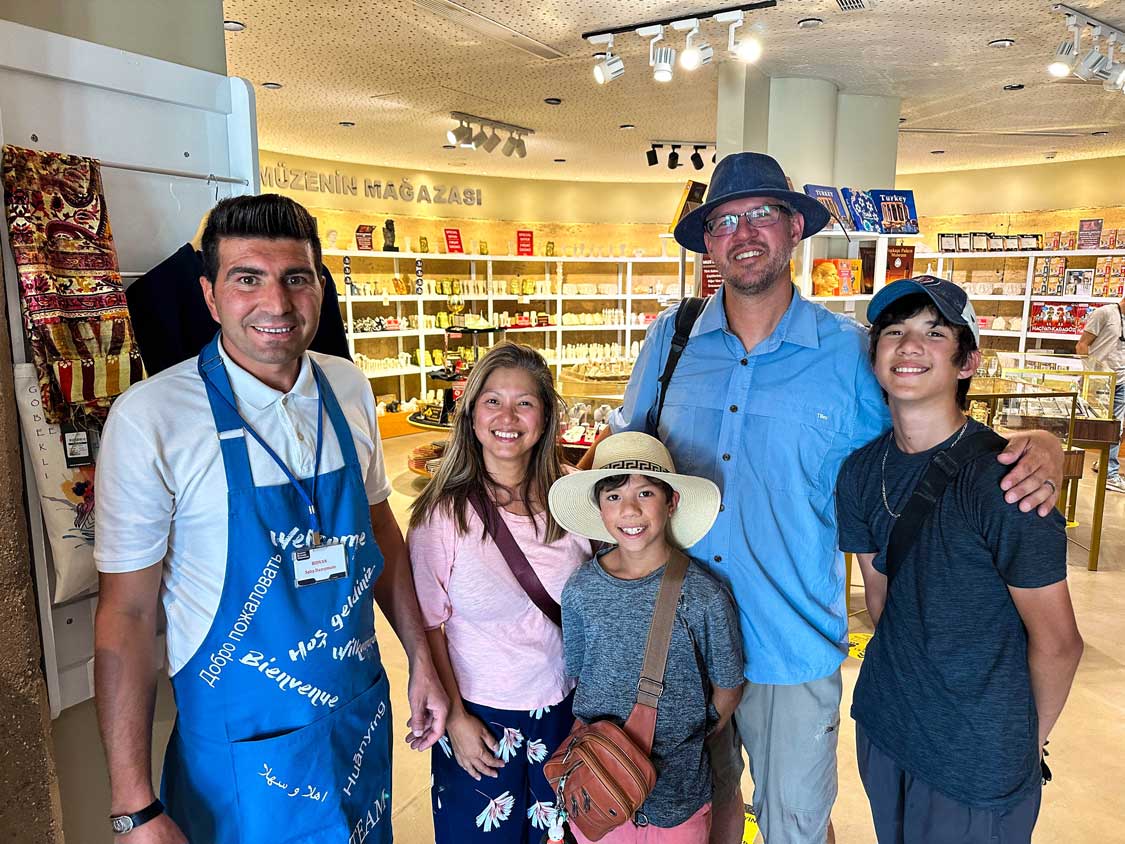
After our visit to Gobekli Tepe we made our way to the town of Harran. This ancient walled city is home to a few historic marvels itself including the fascinating mud-brick “Beehive” houses. This remnant of ancient Mesopotamian culture may not represent the original buildings, but it does showcase a way of life that has existed here for well over a thousand years.
The boys had an absolute blast running through the maze-like houses, enjoying the naturally cool air that this ancient building style offered.
Harran is also home to the remnants of Harran University. This university, which dates back to the 8th century CE, was an important place of learning for astronomy, mathematics, medicine, and philosophy. There isn’t much to see at the university, as most of it has been lost to earthquakes. But the city walls and astronomy tower are still here, and it made for a fascinating stop.
After Harran, it was back in the city of Sanliurfa. Our first stop was the Sacred Carp of Gölbaşı. Located in a massive outdoor pond surrounded by fountains and urban parks, this pond is where Abraham and a female friend were tossed from a cliff. God was said to have intervened by creating a storm that made a pond, saving him from the fall.
We wandered through the city, checking out the town’s exciting bazaars, visiting the Cave of the Prophet Job, and checking out the awe-inspiring Sanliurfa Castle, among the many things to do in Sanliurfa before making our way back to the Sanliurfa Airport for our journey back to Canada through Istanbul.
Our Southeast Turkey Travel Video
Interested in exploring more about travel in Sanliurfa and the rest of Southeast Turkey? Check out our YouTube video that shares our experiences through Mount Nemrut, Arsameia, Severan Bridge, Sanliurfa, Gobekli Tepe, and Harran.
Things To Do In Sanliurfa
Walking through Sanliurfa is a step into authentic Turkiye. This is a city that blends modern life with ancient history in a seamless form.
Not many travelers take the journey to this far east city, but those who do are transported into an entirely unique Turkish travel experience. One that will stay with them for the rest of their lives.
Gobekli Tepe
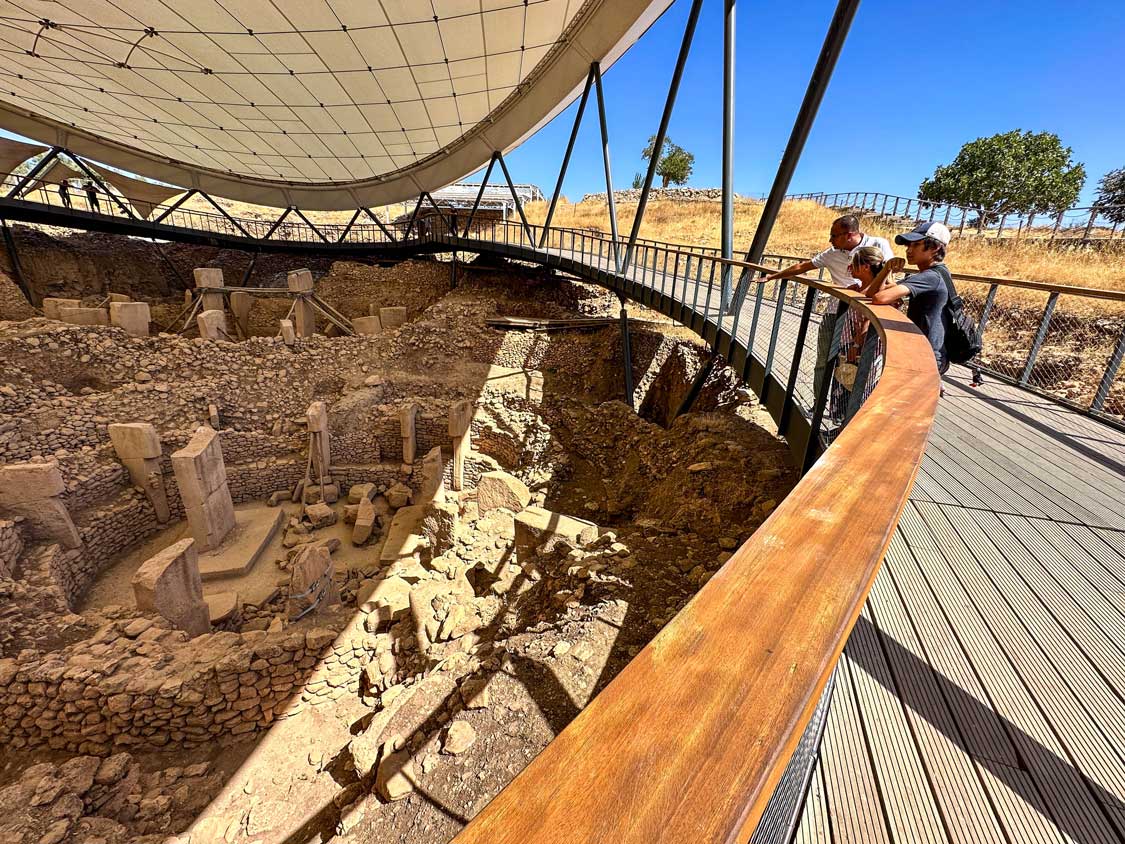
Gobekli Tepe was the driving force behind my family’s choice to leave Cappadocia and head to eastern Turkiye. Gobekli Tepe is an ancient temple located about 20 minutes outside of Sanliurfa. But it’s easy to say that the city owes its heritage to those who built it.
Believed to be the oldest man-made structure ever found, Gobekli Tepe is, without a doubt, one of the most monumental places to visit in Sanliurfa. The six unique temples scattered across a hillside date back an astonishing 12,000 years. That’s back when humans were still a hunter-gatherer culture.
It’s easy to visit Gobekli Tepe on your own if you have access to a rental car. But if you truly want to get the most out of your experience, I’d recommend hiring this guide. He’s an expert on the Gobekli Tepe ruins, and he truly made our travels in Sanliurfa an experience.
You can read our guide to visiting Gobekli Tepe here.
Pool of the Sacred Fish
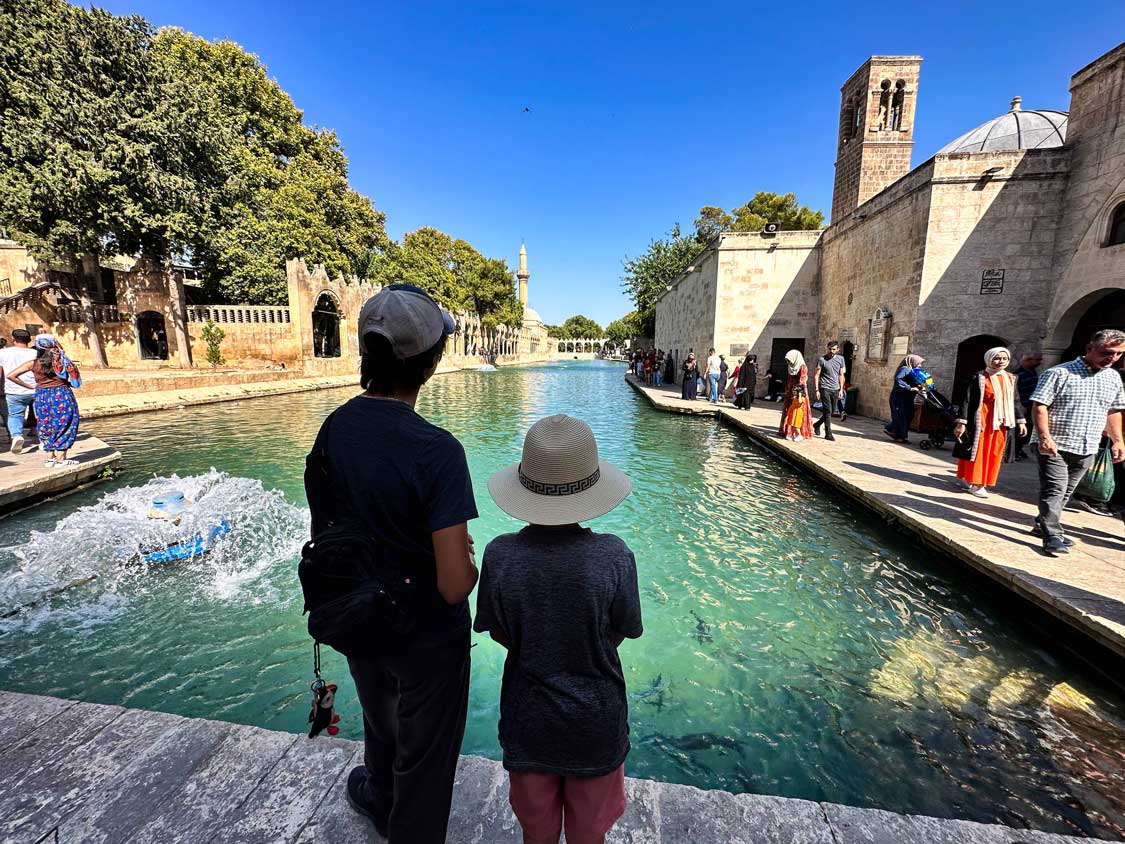
Situated in the heart of Sanliurfa, it is one of the city’s top attractions. The Pool of the Sacred Fish is one of the Sanliurfa pilgrimage sites and one of the top urban parks in the city. It consists of a large pond dotted with fountains and filled with hundreds of sacred carp. A fish that play a key role in the story of the Prophet Abraham.
The story of the pond is that King Nimrod chose to burn idol worshippers on this spot. He created a large fire and cast the accused from a cliff top into the fire. According to the legend, when Nimrod flung Abraham into the fire, the fire became water, and the firewood became the fish.
This sacred pond, known as “Balikli Göl,” is surrounded by marble buildings and arches that include the Rizvaniye Vafki Mosque and the Medrese complex, as well as the Halilur Rahman Mosque.
We had a fantastic time feeding the fish and wandering the connected pathways and streams. This is a great place to grab an ice cream on a hot day as well.
Cave of the Prophet Abraham (Hazreti Ibrahim Halilullah)
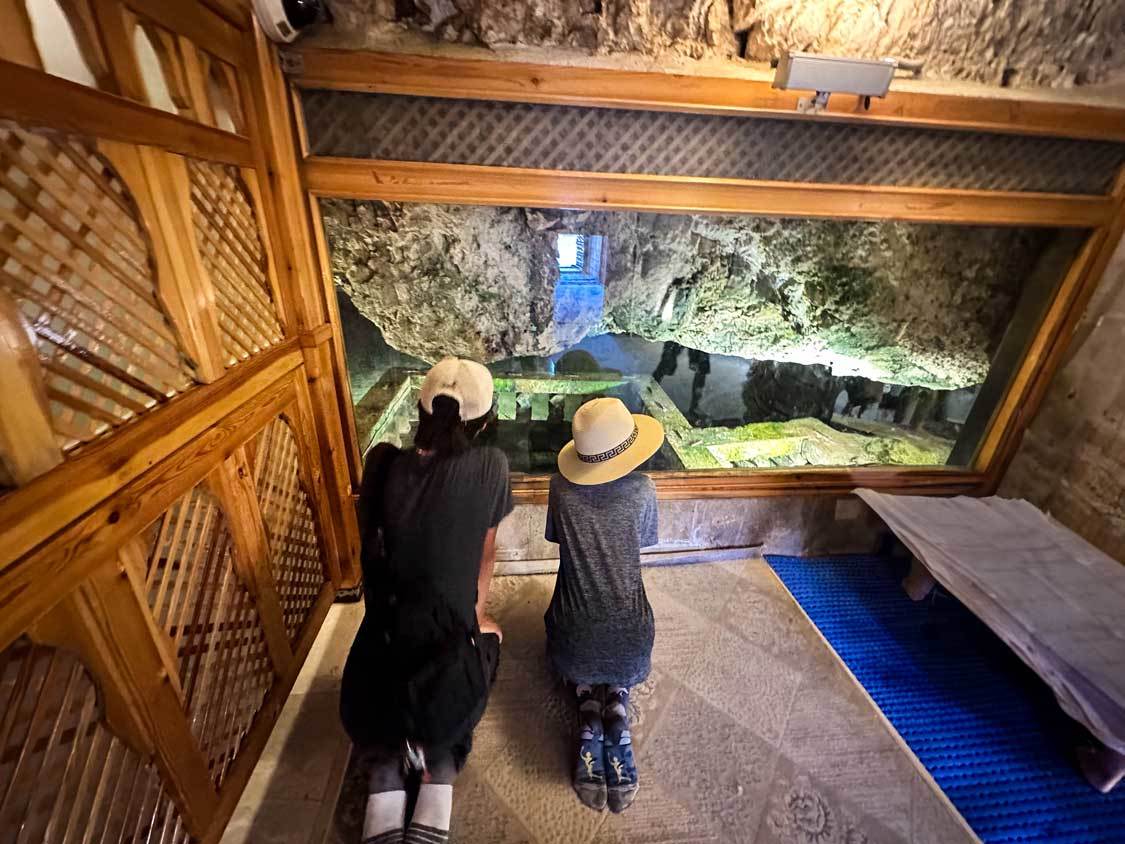
Within the same complex as the Pool of the Sacred Fish is Hazreti Ibrahim Halilullah. This is believed to be the location where the Prophet Abraham was born. His birth was kept a secret because King Nimrod believed that a great leader would soon be born, so he ordered the death of all of the Ur’s newborn children.
The cave is free to access and is located on the west side of the central courtyard. Inside is a running faucet where devotees can wash their hands with holy water.
The cave is one of Sanliurfa’s most important pilgrimage sites. Before the hajj to Mecca, many pilgrims visit the cave to seek blessings.
Cave & Complex of the Prophet Job
Abraham’s cave is not the only important cave in the city of Sanliurfa. In the south end of the city lies the Cave of the Prophet Job. It’s believed to be the location where Job rested after he was afflicted with a terrible skin disease.
This is the location where it is believed that God ordered Job to strike his foot on a rock, after which water gushed forth, offering him relief from his pain. Every year, pilgrims visit this Sanliurfa attraction to wash in water from the well.
Sanliurfa Archaeology Museum
Sanliurfa is famous for its history, so a stop at the Sanliurfa Archaeological Museum is a perfect way to wrap up all of the top experiences in Sanliurfa into something manageable.
This excellent museum stays focused on the epic history of the Sanliurfa province and includes a range of artifacts and displays from Gobekli Tepe, the Urfa Man statue (believed to be the oldest life-sized representation of a human), as well as pottery, agricultural history, and much more.
Included in the Sanliurfa Archaeological Museum ticket price is access to the Haleplibahce Mosaic Museum next door. Housed under a large dome, this museum guards an impressive collection of Roman-era mosaics that were discovered at this location in 2006.
Urfa Castle
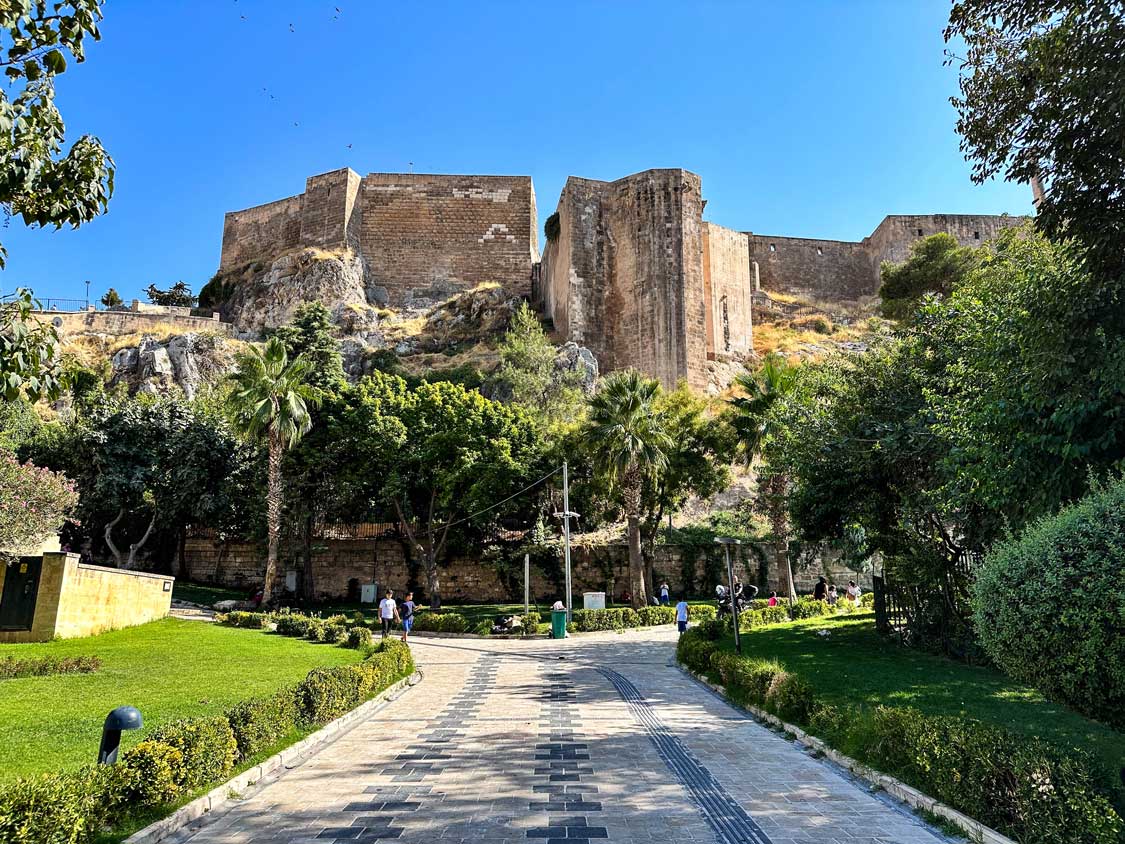
Towering over many of the top attractions in Sanliurfa is the ancient Urfa Castle. This impressive building is so ancient that no one is exactly sure when it was built. But the outer walls were constructed in 814 CE, and it’s believed that the location dates back to at least the age of King Nimrod, 2000 BCE.
Urfa Castle can be reached by a winding trail that begins at Golbasi Park. It follows switchbacks up Nimrod’s Pulpit (the name of the cliff). At the base of the cliff is a massive 40-foot trench that was built as a protection for the castle.
As with anything this old, Urfa Castle has seen many changes over its lifetime, and as you explore, you’ll see transitions of Greek, Byzantine, Crusader, and Ottoman influences.
Sanliurfa Bazaar
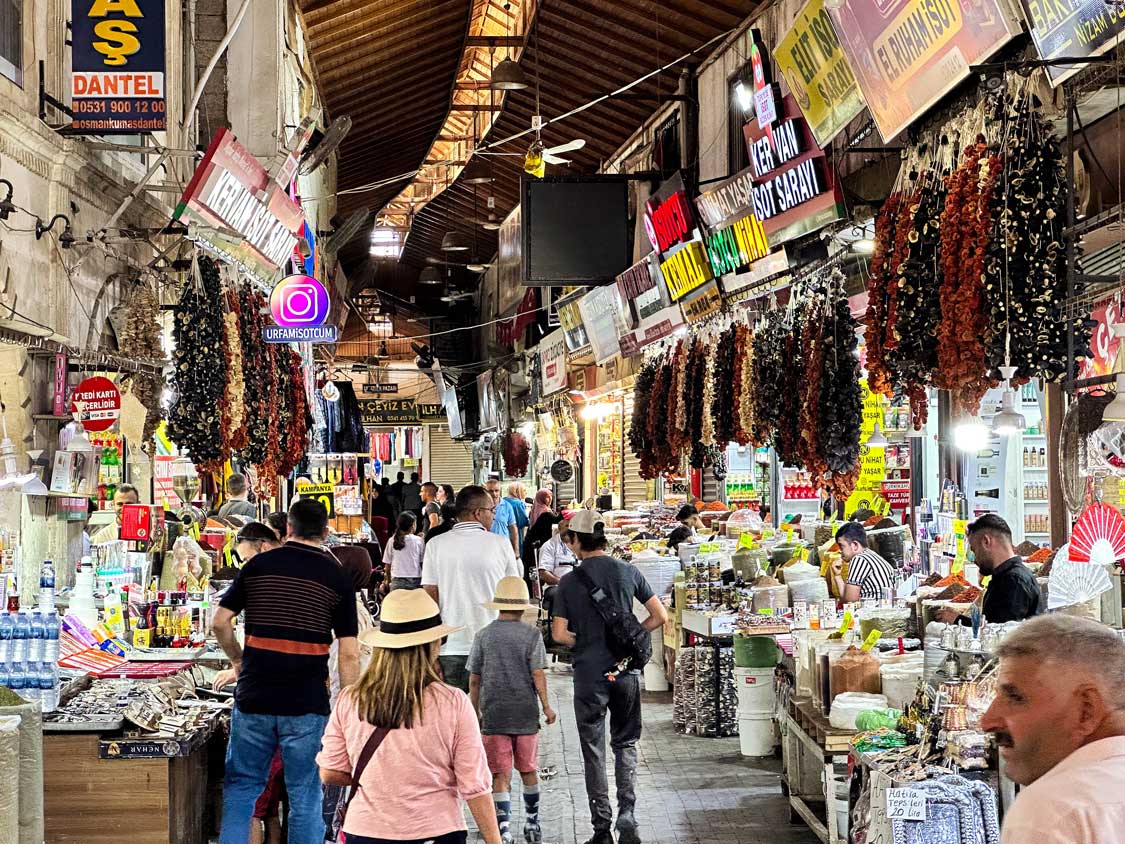
Like all of my favorite places to visit in Turkiye, one of the best things to do in Sanliurfa is visit the local bazaar or market. We always end up having the best, most authentic local interactions at these local hotspots, and the Sanliurfa Bazaar was no exception.
The Sanliurfa Bazaar is a mazelike glimpse into local life in the city. It’s packed with stalls selling bags of herbs and spices, meats, fish, clothing, and artisan metalwork. It’s easy to pass a couple of hours here. It wasn’t long before Christina and the boys found the perfect Turkish scarves to bring home with them,
At the center of the bazaar is a large courtyard dining area that makes for a wonderful spot to have lunch. Don’t miss the city’s unique pistachio hot cocoa, which is a local favorite and one of our favorite foods to eat in Turkiye.
The Sanliurfa bazaar lies within easy walking distance of the sacred pond.
Grand Mosque
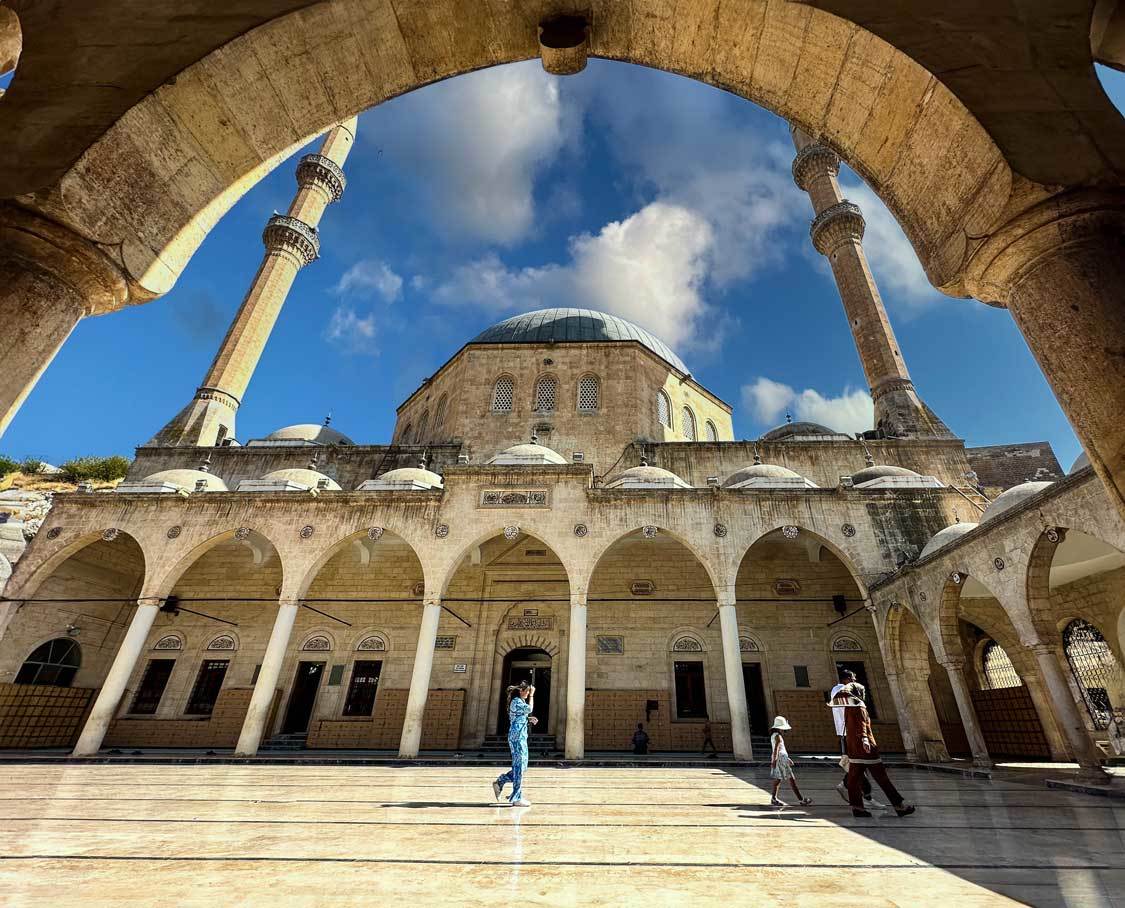
The historic Grand Mosque in central Sanliurfa is a stunning site and one of the best places to visit in the city. It’s also a great reminder of how many historic cities have changed hands and cultures throughout the centuries.
The Grand Mosque, also known as Ulu Cami, was originally the location of a Jewish synagogue. In the 5th century, the synagogue was replaced by the Church of St. Stephen, a Christian religious site. century CE as a Christian church. In 1523, the Church of St. Stephen was transformed into the city’s Grand Mosque by Muhammad Salih Pasha.
Selahaddin Eyubi Mosque
While we didn’t have time to fit the Selahaddin Eyubi Mosque into our one day in Sanliurfa, many people told us that this is the most beautiful mosque in the city.
The mosque was converted in the 19th century on the site of the 5th century Church of St. John the Baptist (not the same one where the Saint lies buried in Selcuk).
The building, which dates back to the 5th century, was retained, but much of the interior was redone. Although Selahaddin Eyubi Mosque might not be among the most popular attractions in the city, its definitely worth a visit if you have some extra time on your hands.
Sogmatar
About 50 miles from Sanliurfa lies the ancient city of Sogmatar. This historic site is bathed in monuments and artwork that dates back thousands of years.
Within the remains of Sogmatar are ancient wells, rock tombs, and stone reliefs sprinkled throughout temples to the moon and sun gods. Yet it’s not just religious history that Sogmatar is known for. A few years ago, a 5,000-year-old children’s toy was found in the region.
Sogmatar is also an important religious site. It’s believed that the Prophet Moses fled to the city to escape persecution from the Pharaohs of Egypt.
Harran
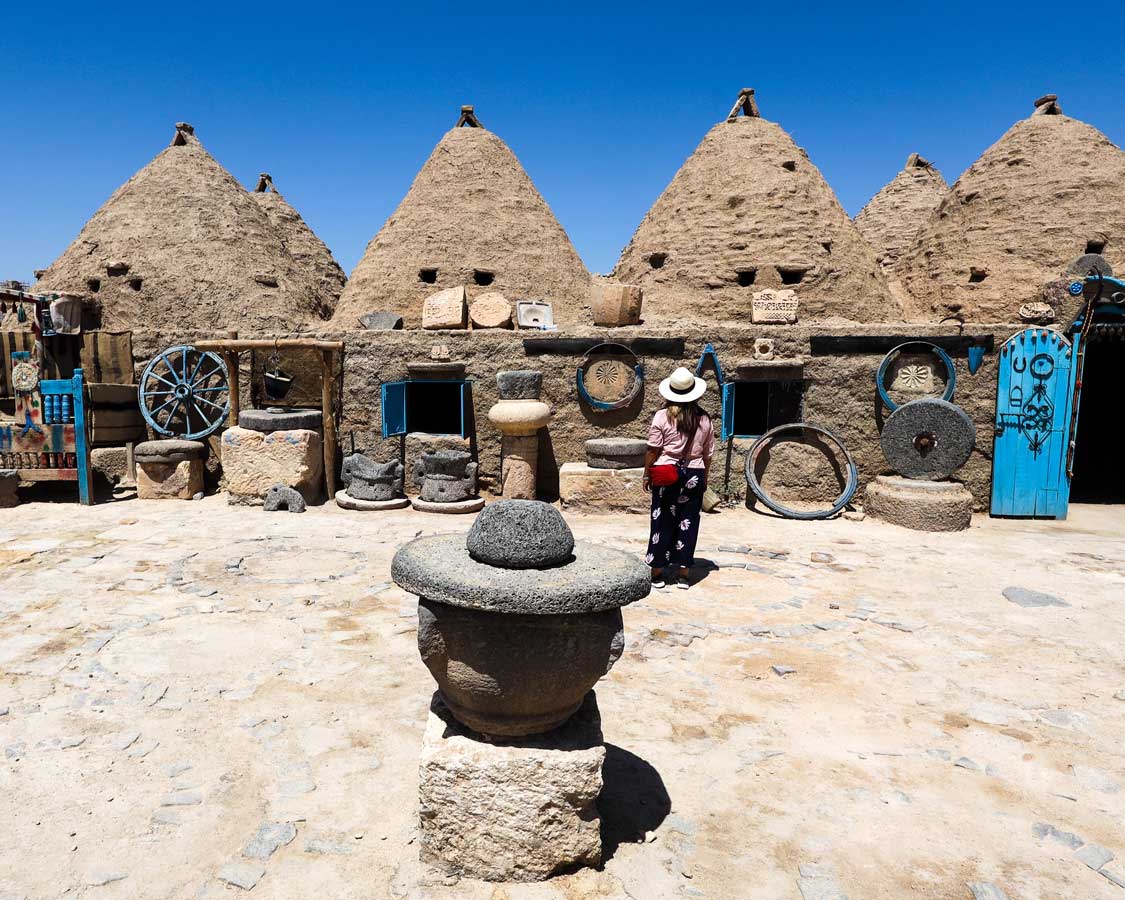
Just 40 minutes from central Sanliurfa lie the remains of another important historic city, the city of Harran.
Dating back to at least 3,000 BCE, Harran has been mostly destroyed by earthquakes, especially the most recent devastation in February 2023. But throughout its 5,000 years of occupation and devastation, Harran remains one of our favorite attractions near Sanliurfa.
The city is most famous for its unique “beehive houses.” This mud-brick architectural style dates back thousands of years and was the traditional way of living for most of the city’s history. The buildings only last a few decades, so the ones you visit now only date back to the late 20th century, but they’re still pretty amazing to wander around.
The kids had an incredible time zipping through the mazelike structure and enjoying the naturally cool air from the brilliant airflow design.
Near the Harran beehives lies the walled city of Harran. While little remains of this historic city, there are ongoing efforts to uncover and restore some of this circular city as well as the moat that surrounded it. We saw a few signs that showed a scaled version of what the city originally looked like.
The walled city also holds the remains of the Harran University, which was an important Islamic University dating back to the 8th century. It was a crucial learning center for astronomy, theology, mathematics, and philosophy. Much of the university lies in ruins, but the striking astronomy tower is still standing.
Day Trips From Sanliurfa
There are plenty of Sanliurfa attractions to keep visitors busy for a couple of days. But if you’re spending a few days or more in the region, you can stretch your legs even further to enjoy some of these amazing things to do near Sanliurfa.
Halfeti Sunken City
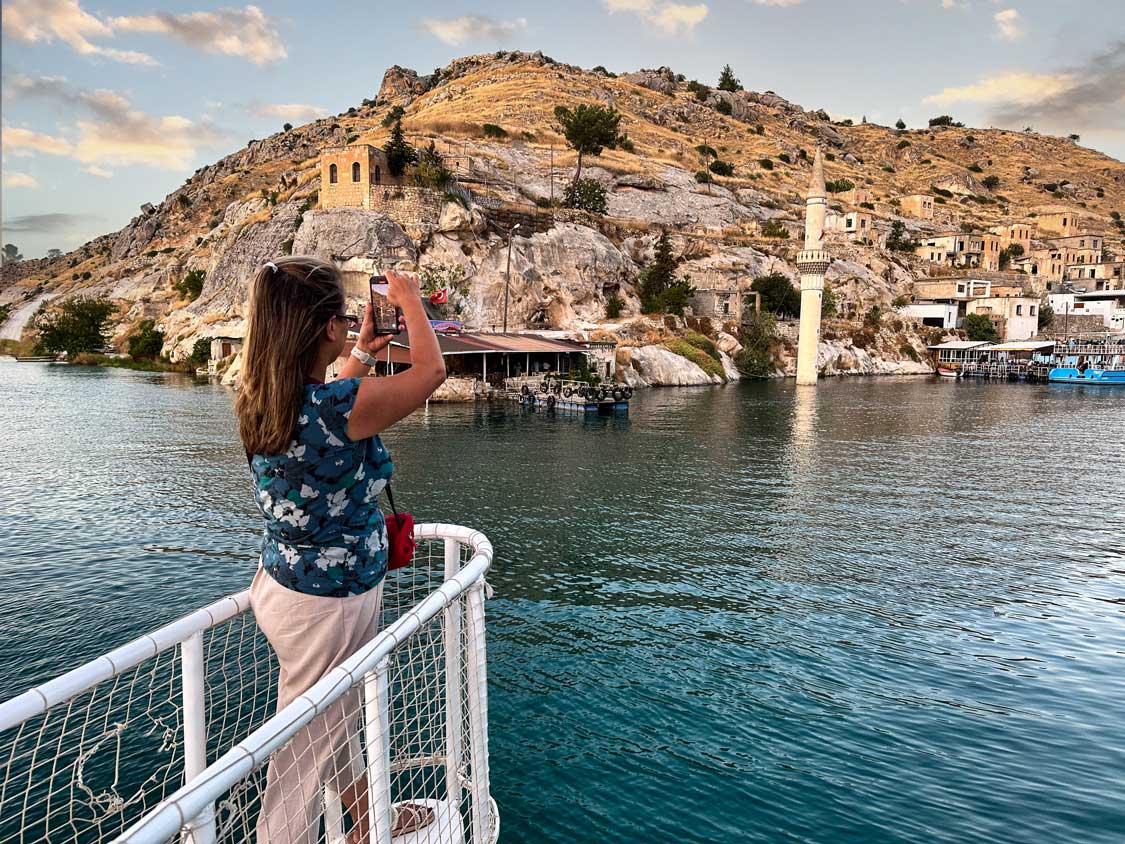
Located about an hour and a half from Sanliurfa, Halfeti is a beautiful riverside city near the border with Gaziantep Province.
In 1999, the Birecik Dam was constructed over the river, causing the flooding of several ancient villages along the riverbanks. The original town of Halfeti was one of them.
Although most of the city sank beneath the rising waters, there is still evidence of its existence that can be seen poking up from the water, including a minaret and several buildings. There are rumors that the site is being considered for some major tourism initiatives that will take advantage of the town’s unique features.
My family enjoyed a brilliant sunset cruise along the river, passing the towering Ramukale Fortress. The fortress dates back about 1,500 years and was built under Armenian rule.
To get to Halfeti Sunken City, the easiest way is to take a tour that can take you directly from Nemrut or Sanliurfa. It can also be reached by public transit or drive. Make sure that you’re heading to Eski Halfeti and NOT Yeni Halfeti.
Eski Halfeti is the last stop, at the bottom of a winding road, where you will be greeted by a beautiful lake. There is no lake in Yeni Halfeti as it is located 10km away from Eski Halfeti at the top of the hill.
Severan Bridge
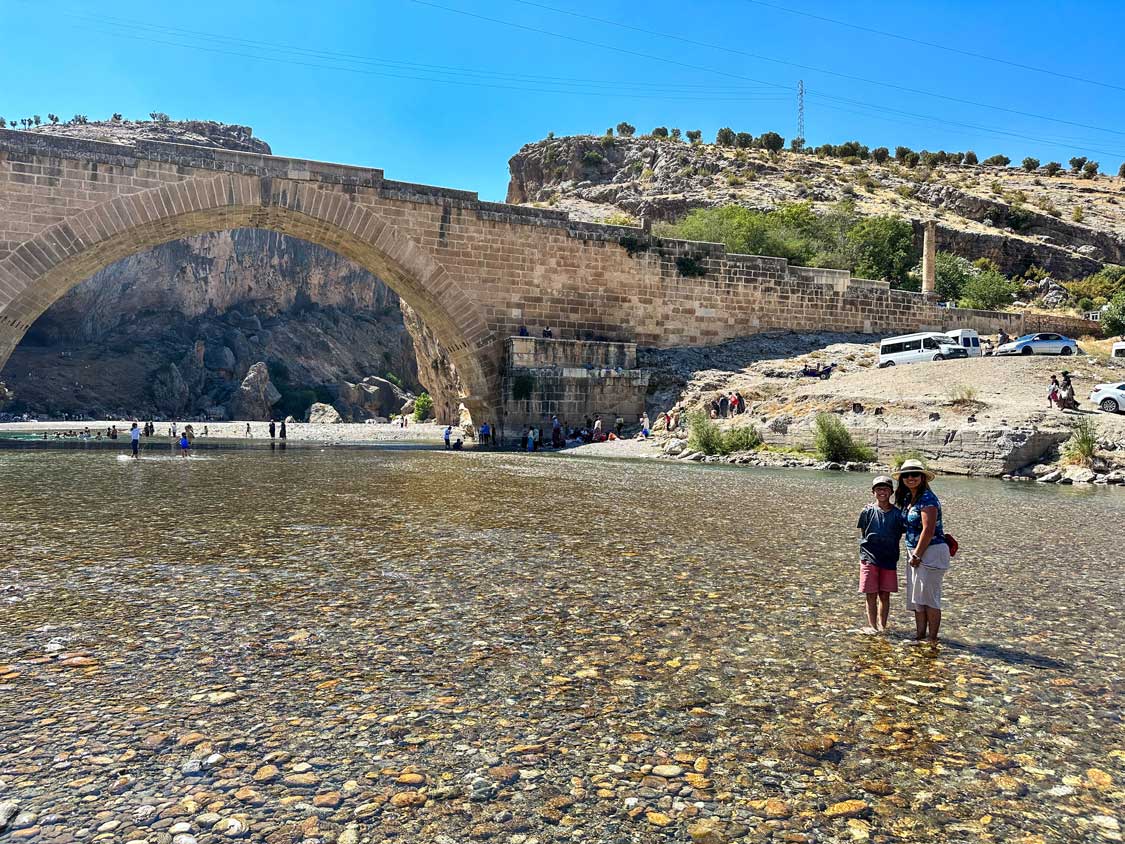
About two and a half hours from Sanliurfa is an ancient Roman bridge known popularly as Cendere, or Severan Bridge. The 2,000-year-old bridge spans the Gendere River. This remarkable piece of engineering was built in the 2nd century CE on the orders of Roman Emperor Lucius Septimius Severus in honor of his two sons.
This simple but beautiful bridge has withstood two millennia of earthquakes, floods, and human use. In fact, it was still open to vehicle traffic until 2015.
The location of the bridge is likely as important as its structure. It’s located at the mouth of a beautiful gorge spanning the Gendere Stream. It’s a very popular camping and picnic spot for locals. Unfortunately, many visitors to the bridge come for family outings and simply leave their glass, garbage, and burning fire pits behind, and the location itself suffers from this.
Karakus Tumulus
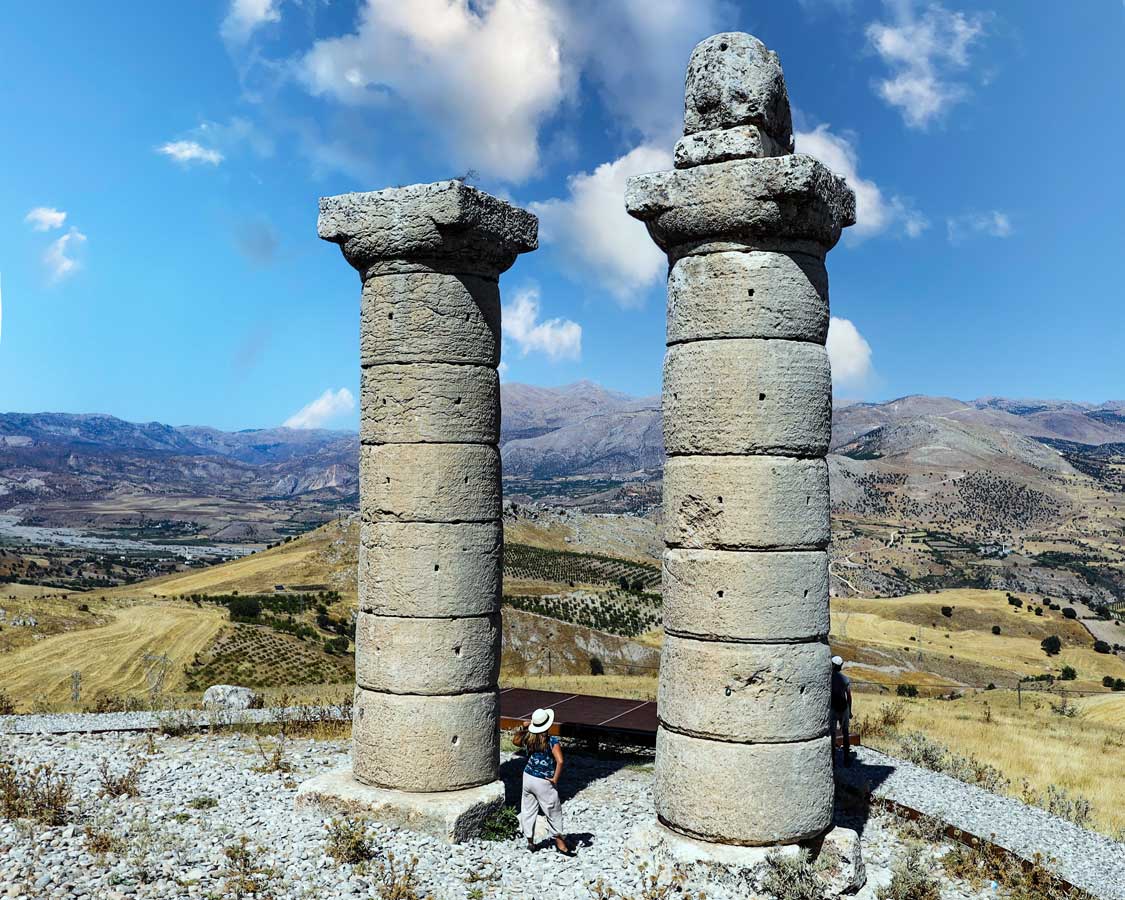
Karakus Tumulus is a fascinating stop just 15 minutes from the Severan Bridge and two hours from Sanliurfa. This mesmerizing burial site was built by the father of Antiochus I, Mithridates II, in 30-20 BCE in honor of his sister Laodice, along with his mother and niece.
The site contains a series of beautiful columns topped with figures, including an eagle and a bull. The tomb itself was looted ages ago, but the views from the circular trail around the site are spectacular.
Arsameia
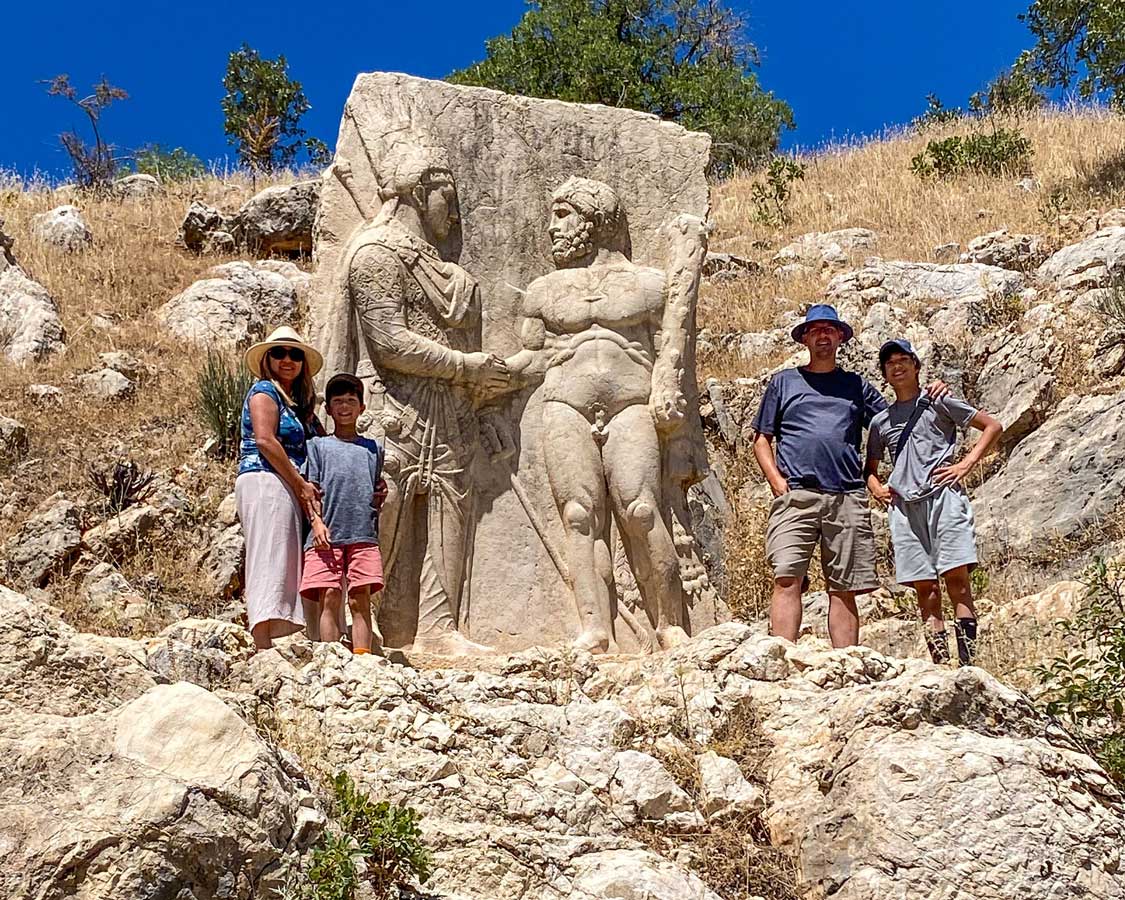
Access to Arsameia is currently closed. But, if you’re with a private tour guide, you may still be able to get a sneak peak. We were with a guide from Tours by Locals who was able to use his contacts to get us access to the site.
Arsameia dates back to the 3rd century BCE and was the summer residence of the rulers of Commagene, including Antiochus I. There are a number of underground chambers, most of which are not accessible due to recent earthquakes. But there are barred entrances where you can sneak a peak of what’s inside.
The most notable surviving monument is a detailed stele relief. It’s believed to be the first depiction of the God Mithras-Helios. Arsameia is about an hour southwest of Mount Nemrut and two and a half hours from Sanliurfa.
Mount Nemrut
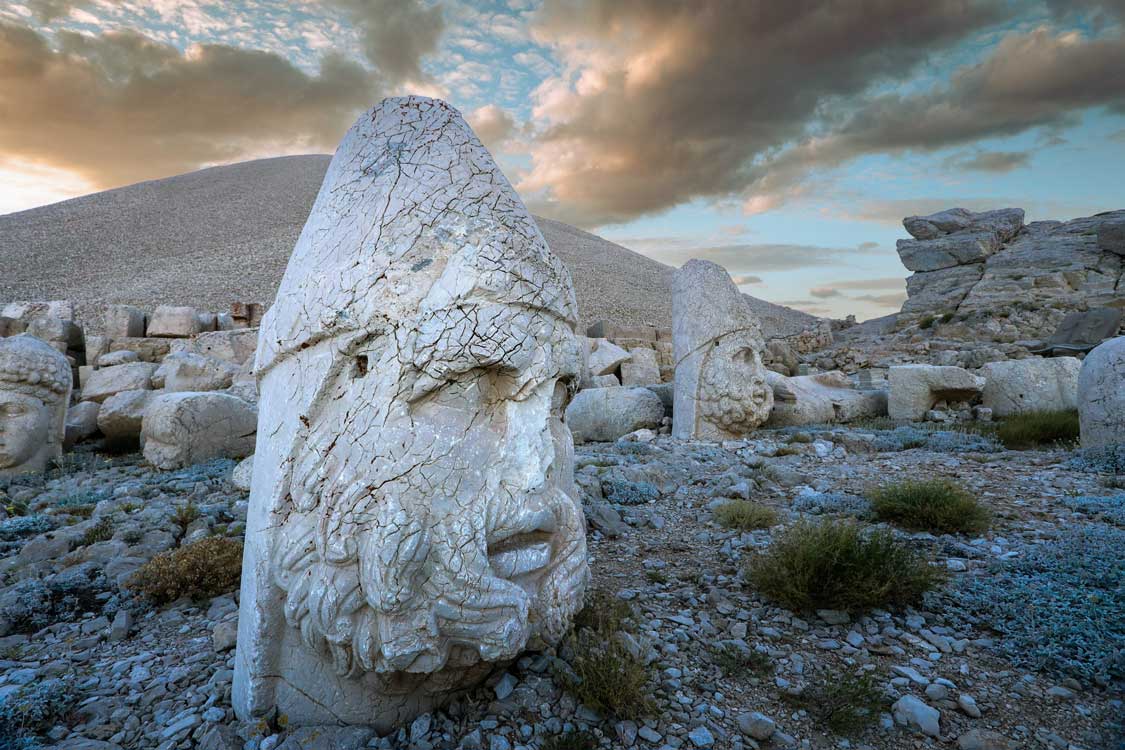
Mount Nemrut was another big reason for my family’s travel to Sanliurfa. This towering 7,000-foot mountain is quite remote, but at its summit is one of the most magnificent monuments in eastern Turkiye.
The mountain is about three and a half hours from Sanliurfa and is best visited as part of a tour. Our tour took us to a parking lot partway up the mountain, where we hiked to the summit for a brilliant sunrise. In the early morning, the sun lights up the mountaintop, uncovering 2,000-year-old monuments to King Antiochus I, along with a variety of Armenia, Persian, and Greek gods that he wished to be among for eternity.
You can read our guide to visiting Mount Nemrut here.
Where To Stay In Sanliurfa, Turkiye
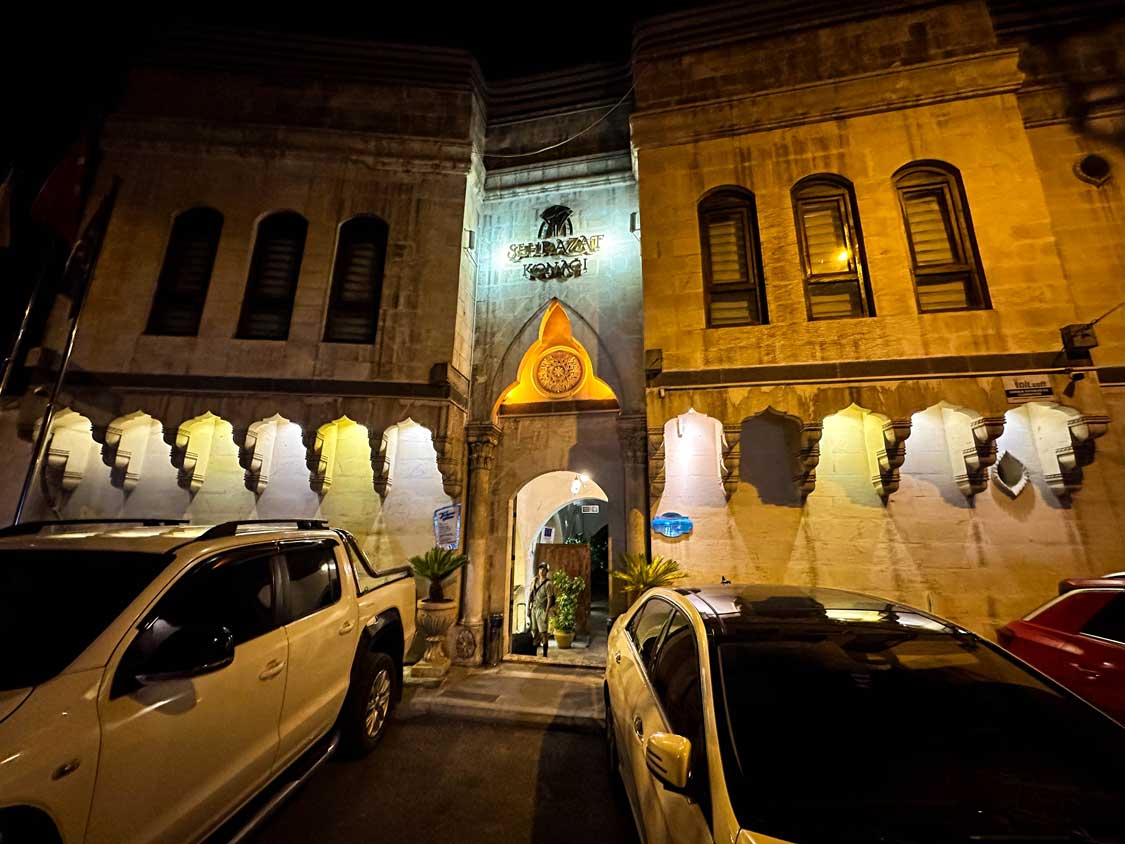
Sanliurfa is a big city with a population of about two million people, so there are no lack of accommodations in the city. But choosing a great hotel in Sanliurfa means knowing a little bit about how the city is laid out.
Most of the top attractions in Sanliurfa lie in the city center, so choosing a hotel close to that area will save you money on transportation as well as a lot of time. Here are a few suggestions.
Sehrazat Konagi Hotel
Situated about a 15-minute walk from Urfa castle, Sehrazat Konagi Hotel was where my family stayed while we were traveling in Sanliurfa. This clean and comfortable hotel has a large open courtyard and an excellent Turkish breakfast.
They did not have family-sized rooms, but we were able to get side-by-side rooms, so the kids were never far away from us.
You can check out their prices and availability here.
Astarte Hotel
Astarte Hotel is less than half a mile from Balkili Gol and the Sacred Pool. Similar to the hotel that my family stayed at, it has a traditional outdoor central courtyard with a terrace and garden.
The rooms are large and include air conditioning and a flat-screen TV. The hotel has an excellent rating, over 9.3 on Booking, and has a 24-hour concierge.
You can find their prices and availability here.
Tessera Hotel
With a 9.7 ranking on Booking, the Tessera Hotel is one of the top-rated hotels in Sanliurfa.
This popular hotel is less than a mile from the city center and is known for its excellent Turkish breakfast.
The rooms all include air conditioning and a sitting area and the bedrooms are extremely comfortable and open. There is also a shuttle to the airport available at an additional charge.
You can check out their rates and availability here.
Tips For Family Travel In Turkiye
Family travel in Turkiye, especially in places like Sanliurfa and the Southeast, requires some planning and a little bit of luck. Some areas of this country can be closed due to political unrest, so it’s always a good idea to check out current travel advisories and stay informed of the current travel status.
Check out our Turkiye Family Travel Blog for everything that you need to know about family travel in Turkiye and watch ouf Tips for Family Travel in Turkiye video below to help you plan an unforgettable visit to this mesmerizing and wonderful country.
You’d be doing us a huge favor if you could hit the like and subscribe buttons.
Enjoy Your Time In Sanliurfa, Turkiye!
With a history going back long before time was ever recorded, Sanliurfa, Turkiye is truly one of the most incredible places to visit in the country. This city does not see the number of visitors that more popular destinations like Fethiye or Cappadocia do. Because of this, Sanliurfa truly offers an authentic taste of real Turkish living.
The vast range of things to do in Sanliurfa makes this a worthy off-the-beaten-path destination in Turkiye and an unforgettable place for a family vacation to Turkiye.
You can find more great information about visiting Turkiye on our Turkiye Family Travel Blog. Or feel free to join our Family Travel Support Group on Facebook. You can connect with more family travelers just like you who love to explore the world.
Wandering Wagars is a participant in the Amazon Services LLC Associates Program, an affiliate advertising program designed to provide a means for sites to earn advertising fees by advertising and linking to amazon.com, amazon.co.uk, amazon.ca. Amazon and the Amazon logo are trademarks of Amazon.com, Inc. or its affiliates

